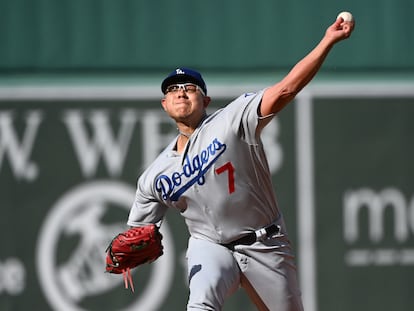Fernando Valenzuela: ‘When I started there were between 6% and 8% Hispanics in the crowd. Now we have 50%’
The legendary Los Angeles Dodgers pitcher talks about his career, the retirement of his jersey number and his legacy in the United States
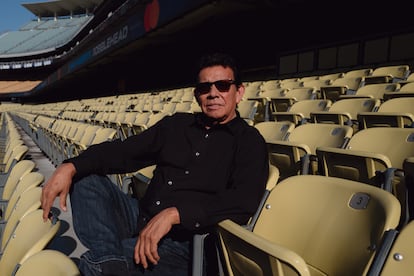

“How would you explain to someone who doesn’t know baseball what Fernandomania was?” The question causes Fernando Valenzuela to look upward, bringing to mind the famous gesture he used to make to gain momentum on the mound at Dodger Stadium in the 1980s. This afternoon, speaking to EL PAÍS, Valenzuela is not on the mound, but in the bleachers of one of the oldest cathedrals of baseball in the United States. “I would say it’s the start of my career, it came about as a result of all those people who were following my games,” Valenzuela says modestly. Vin Scully, the legendary Dodgers announcer, was more expressive. He described it as “a religious experience” at the time.
This summer has brought back those days of euphoria. The Dodgers recently retired the number 34 jersey that Valenzuela made famous thanks to his left arm. Almost all Dodgers fans acknowledged that the gesture of recognition was a long time coming: it has been 32 years since Valenzuela called it a day. The delay was partly due to baseball purism, the lore of which says that only players who are in the Cooperstown Hall of Fame deserve this honor. Valenzuela is not, despite being the first rookie in history to win the Cy Young Award, being an All-Star six years in a row and leaving the Dodgers as the franchise’s eighth winningest pitcher.
“You could see it coming,” says Valenzuela, a man of few words who is known for guarding his privacy. “No one since that time had worn the 34; for me the important thing is that the moment came. I’m very happy.” On the day of the ceremony, he was a bundle of nerves. “I prefer loaded bases and no outs,” he told reporters, provoking laughter.
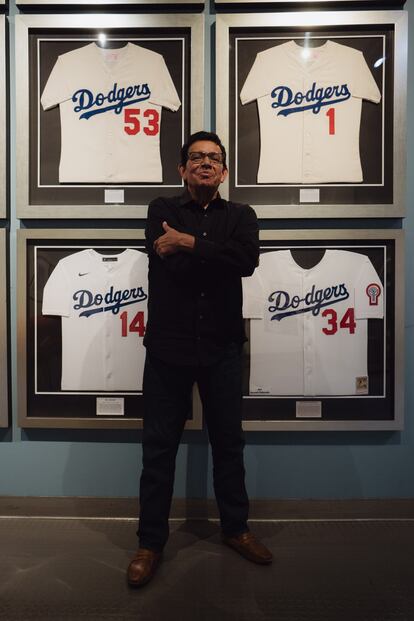
Valenzuela has avoided the spotlight for decades. In July 2021, when the Dodgers marked 40 years since their 1981 World Series, he was the last player on that legendary team to arrive at the ballpark. He spent his morning on another of his great passions, golf. He played 18 holes and headed to Chavez Ravine once he finished. He is now a Spanish-language commentator for the Dodgers’ Spanish-language telecast, providing insight between the first and seventh innings, which allows him to leave the stadium without having to stop every few meters to take a picture or sign autographs for fans.
The youngest of 12 children from a modest family living in the municipality of Navojoa, in Mexico’s Sonora state, in 2003 — his first year of eligibility — Valenzuela obtained only 6% of the 75% of votes needed to enter the Hall of Fame. A year later he only got 19 endorsements, which ended his chances of becoming the first Mexican to enter the select group. Whether Valenzuela should be in the Hall of Fame is the subject of endless debate among baseball fans. But the pitcher is at peace with his absence from Cooperstown: “The most important thing for me is the affection of the people, the support of all the Hispanic people, not only here in the Los Angeles area, but outside as well,” he says.
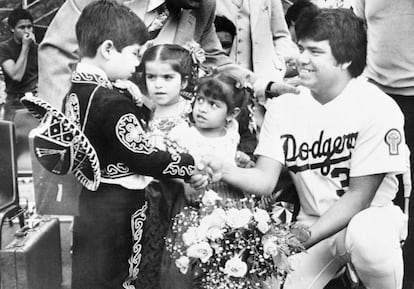
In his book Daybreak at Chavez Ravine: Fernandomania and the Remaking of the Los Angeles Dodgers, baseball historian Erik Sherman states that Valenzuela’s legacy transcended sports. “[...] he was a healer in a time, much like now, where many Americans perceive Mexicans as second-class citizens. To Latinos he means what Jackie Robinson was to Blacks,” writes the author. The pitcher’s humble character precludes him from claiming such a role in history, but in speaking about Dodger Stadium, a building just two years younger than he is, he notes how the crowd has been transformed. “When I started there were between 6% and 8% Hispanics in the crowd. Now we have 50%. Everywhere you turn you hear Spanish,” he says.
The Dodgers will celebrate Guatemalan heritage on September 20. A few weeks ago, the anthem of El Salvador was played before a game against Arizona and flags decorated the park. In August, Mexicans are honored. All this would be impossible if an 18-year-old Valenzuela had not caught the eye of legendary scout Mike Brito. The signing was finalized in 1979 and Valenzuela’s arm, after a spell at Yucatán in the Mexican league, was seasoned in the minors. His momentum reached fever pitch in 1981. Latinos flocked to see someone like them succeed in the middle of the diamond. It was the end of the bitterness between Mexican-Americans and the Los Angeles franchise following the decision of the city authorities in 1959 to evict dozens of Mexican families from the land where the stadium now stands. For decades, Latinos had turned their backs on the team. Until Fernandomania arrived.
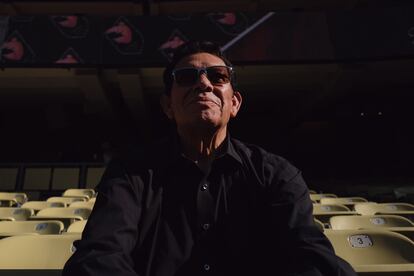
“When you’re inside the stadium, it’s hard to take in everything that’s going on around you. There are people who tell me about some games that I don’t really remember, which tells me that people were invested,” Valenzuela says. Among the dates he remembers clearly is October 23, 1981. He was the starting pitcher in the World Series where the Dodgers faced the New York Yankees, who had won the first two games of the series at home. Valenzuela was pitching in his first World Series, just a few months after his debut. With help from another rookie, Dave Righetti, and the hitting of Pedro Guerrero, the Dodgers won 5-4 in a game attended by 56,000 people. Five days later, the team won its first title in 16 years after losing in four World Series between 1966 and 1978.
“Can you imagine?” asks Valenzuela, raising his eyebrows. “Being in my first year and being in the World Series, against the Yankees! To be a part of it and to win it. There’s nothing like it, it’s the best.” Another famous night was June 29, 1990, when he pitched the only no-hit, no-run game of his entire MLB career. It took him 119 pitches, but he was able to keep the St. Louis Cardinals scoreless. In Toronto that same day, Oakland Athletics pitcher Dave Stewart did the same against the Blue Jays. It was the first time since 1898 that there had been two such games in one night.
The Dodgers released Valenzuela in 1991 in an almost dishonorable discharge. “All careers must come to an end,” said Peter O’Malley, the team’s owner at the time. Valenzuela was signed by the California Angels, which was looking to draw more people to the ballpark in Anaheim. To test the left-hander’s level, they asked him to play with the minor league affiliate in Palm Springs. When Valenzuela showed up, there were close to 5,000 people waiting for him, unheard of for the Angels. “Going there wasn’t easy, but that’s what happened. For my style of play I needed to be more active and at that time I had to go to the minors to prepare,” he says.
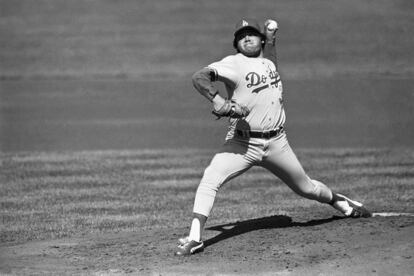
Vincent “Sandy” Nava was the first American-born Hispanic player in the major leagues, making his debut for the Providence Grays in 1882, although he identified himself more as a Spaniard. During the 1940s there were dozens of Latinos playing ball. Valenzuela is far from being the first Mexican in the sport, but his legacy is among the most influential.
Today players from the Dominican Republic dominate in the major leagues with 90 representatives. They are followed by Venezuela with 53, and Cuba with 20. Mexico has only eight players in MLB, behind Puerto Rico, with 19. Why have so few followed in Valenzuela’s footsteps? “You have to belong to a team, so many don’t go as free agents. That makes it a little difficult for Mexican players. It’s not like in other countries, where teams go straight to the player and offer him money. But out of 10, two stand out. There is talent in Mexico and lately Mexican players are at the same level as the major leagues,” Valenzuela says.
One of the great Mexican talents in the majors is now at his lowest ebb. Pitcher Julio Urías was set to follow in Valenzuela’s footsteps with the Dodgers, but his arrest over an alleged domestic violence incident has his career on the brink. This week Urías’ number 7 jersey was impossible to find in the stadium’s stores. His image has been erased for Hispanic Heritage Month, which began Friday. “He’s no longer with the team this year,” opines Valenzuela, who was never the subject of a scandal during his time as a public figure and has been married for 40 years. “I think the outcome of his hearing has to be taken into account,” he adds. Urias is scheduled to appear in court on September 27. For the moment, Valenzuela’s legacy remains unattainable.
Sign up for our weekly newsletter to get more English-language news coverage from EL PAÍS USA Edition
Tu suscripción se está usando en otro dispositivo
¿Quieres añadir otro usuario a tu suscripción?
Si continúas leyendo en este dispositivo, no se podrá leer en el otro.
FlechaTu suscripción se está usando en otro dispositivo y solo puedes acceder a EL PAÍS desde un dispositivo a la vez.
Si quieres compartir tu cuenta, cambia tu suscripción a la modalidad Premium, así podrás añadir otro usuario. Cada uno accederá con su propia cuenta de email, lo que os permitirá personalizar vuestra experiencia en EL PAÍS.
¿Tienes una suscripción de empresa? Accede aquí para contratar más cuentas.
En el caso de no saber quién está usando tu cuenta, te recomendamos cambiar tu contraseña aquí.
Si decides continuar compartiendo tu cuenta, este mensaje se mostrará en tu dispositivo y en el de la otra persona que está usando tu cuenta de forma indefinida, afectando a tu experiencia de lectura. Puedes consultar aquí los términos y condiciones de la suscripción digital.
More information
Archived In
Últimas noticias
Imelda Castro, the woman who wants to rule the cartel battleground of Sinaloa
The new victims of the Republican war on Obamacare: Millions hit by soaring health insurance premiums
A country divided on migrant rights: Some US states expand protections while others restrict them
Venezuela authorizes the release of another 87 political prisoners
Most viewed
- David King, chemist: ‘There are scientists studying how to cool the planet; nobody should stop these experiments from happening’
- Reinhard Genzel, Nobel laureate in physics: ‘One-minute videos will never give you the truth’
- Oona Chaplin: ‘I told James Cameron that I was living in a treehouse and starting a permaculture project with a friend’
- Sinaloa Cartel war is taking its toll on Los Chapitos
- The Interoceanic Train, the Mexican alternative to the Panama Canal
